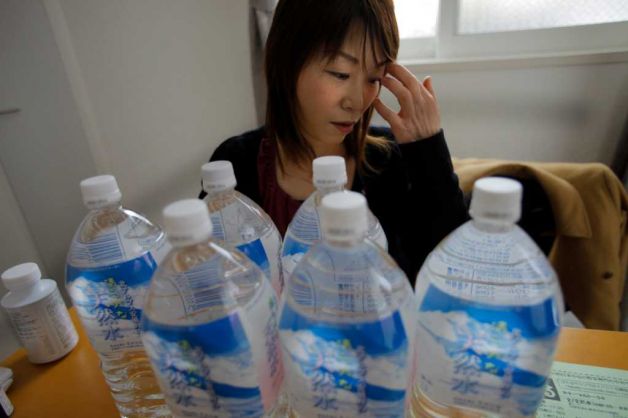submitted by Samuel Bendett

In this Sunday, Feb. 26, 2012 photo, Yoshiko Ota displays bottled water she bought at a local shop for daily use at her house in Fukushima, Japan, Sunday, Feb. 26, 2012. Ota keeps her windows shut. She never hangs her laundry outdoors. Fearful of birth defects, she warns her daughters: Never have children. This is life with radiation, nearly one year after a tsunami-hit nuclear power plant began spewing it into Ota's neighborhood, 40 miles (60 kilometers) away. She's so worried that she has broken out in hives. (AP Photo/Itsuo Inouye)
By YURI KAGEYAMA - The Associated Press - ajc.com - March 9, 2012
FUKUSHIMA, Japan — Yoshiko Ota keeps her windows shut. She never hangs her laundry outdoors. Fearful of birth defects, she warns her daughters: Never have children.
This is life with radiation, nearly one year after a tsunami-hit nuclear power plant began spewing it into Ota's neighborhood, 40 miles (60 kilometers) away. She's so worried that she has broken out in hives.
Recent Comments